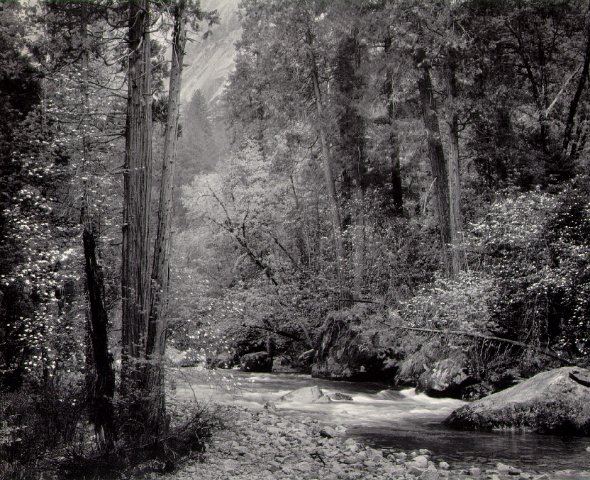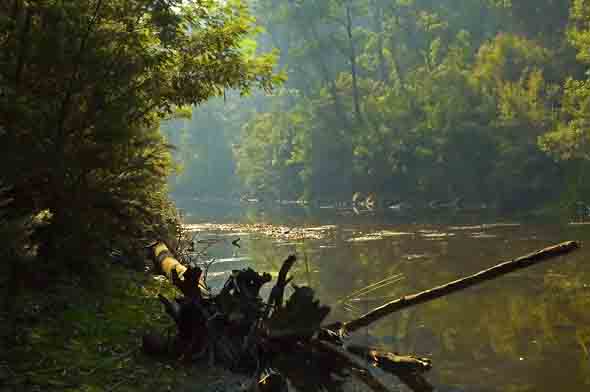Practical Aesthetics for the Art Photographer:
Spirit of Place
Version 1.0, © 2006 by Dale Cotton, all rights reserved.

Fig. 1: Ansel Adams: Tenaya Creek, Dogwood, Rain, Yosemite Valley, c. 1948
The ancient Greeks and Romans believed (or at least pretended to believe) in naiads, dryads, hamadryads, and the like. These were reputedly female spirits that inhabited and were bound to certain places. Perhaps this tradition arose because certain places seem to have a specific character and beauty that distinguished them from the rest of the landscape to the more sensitive of our ancestors.
When Ansel Adams, who primarily did landscape photography, got tired of hearing people say that his pictures looked "lonely" because there were no people in the compositions, he finally thought to say: "Every picture has at least two people in it - the photographer and the viewer".
I would add to that: any successful landscape picture has a third "person" in it - the spirit of the place that has been captured. The ancients painted their gods and demi-gods in their own image; and certainly nothing is more human than vanity. To win admiration the spirit of a particular place dolls herself up in her finest finery then guides the sufficiently suggestive passer-by to the vantage point from which her artifice is most obvious. If that passer-by happens to be a painter or photographer out looking for pictures, my fancy is that what moves him or her to stop to work a particular scene is a psychic tap on the shoulder by that spirit transmitted via the unconscious mind.

Fig. 2: Autumn Smoke Haze, © Bob Munro, 2005
If the artist is competent, the resulting painting or print will prove sufficient witness to the spirit's beauty that other sufficiently suggestive viewers will also be sucked into her hypnotic spell by gazing upon that picture. If this happens the artist's name will (temporary) be inscribed in that spirit's good book, meaning he or she will be permitted to pass that way another day and perhaps be shown even more intimate revelations of beauty.
Fancies aside, if you do landscape pictures and are unsure of a composition, one thing to ask yourself is whether a given picture coheres into a unique personality or remains a lifeless and fragmented collage of details.